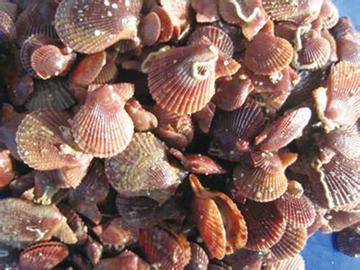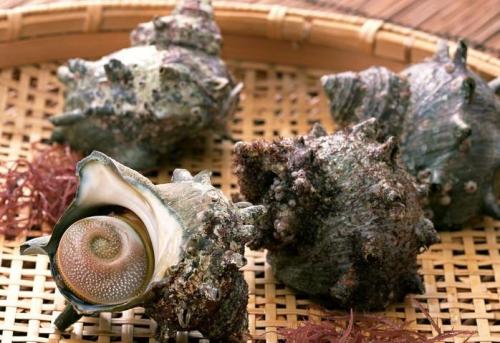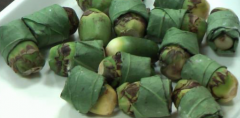What is the new trend of shellfish culture? Is there a good prospect for shellfish culture? what's the difficulty?
Now, we pay more and more attention to the development of agriculture, among which seafood culture is also more important. Do you know the prospect of shellfish culture? What are the difficulties in breeding?
Taiwanese love to eat shellfish. In addition to eating more than 80,000 metric tons of domestic shellfish every year, they also have to import from abroad to meet market demand. However, the production process of shellfish is easily affected by climate and diseases, so it is unable to stabilize production. Dong Zhe-Huang, an assistant professor in the Department of Aquatic Bioscience at National Chiayi University, and a number of researchers have successively invested in the development of high-priced new shellfish breeding techniques, such as snails and river clams, in addition to increasing the species of shellfish culture and assisting in the regulation of shellfish production. I also hope to increase the income for the aquaculture industry.
The annual production of shellfish in Taiwan is more than 80, 000 metric tons, mainly oysters and clams, accounting for more than 85% of the total output of the year. However, due to the large demand in the domestic market and consumer demand throughout the year, in addition to domestic farming, there are also manufacturers who import nearly 3000 metric tons of oysters and clams from abroad to fill the market demand.

As oysters and clams are easily affected by climate and have high summer mortality, coupled with unknown causes of death of clams in recent years, such as the outbreak of large-scale death of clams in China in 2016, the annual production of clams is only 38,000 metric tons. 60% of the output of the previous year, in addition to affecting the income of fishermen, the market price has also risen. In addition to assisting farmers in strengthening the management of on-site shellfish culture and guiding the stability of shellfish production, investing in the research and development of new shellfish culture has also become one of the research focuses in recent years. Through the development, production and promotion of emerging shellfish, it can not only help the market adjust production capacity, but also develop shellfish that can adapt to the climate and environment, and increase the income of farmers.
Develop new shellfish to adjust production capacity. "it was an accident to invest in the development of fragrant snails and river clams," says Dong Zhe-Huang with a smile. Taiwan has not developed a snail farming industry, and it is mainly fishing, mainly because students are interested in snails.
Dong Zhe-Huang said that the sweet snail, also known as Tiangu snail and ringing snail, was once sold for 200 yuan in China. Japan also has the habit of eating snail, which is a marketable species. Through the team squatting in Yunlin for a long time to collect snails and establish their life history, it is found that the domestic snail production season lasts from September and October every year to February or March of the next year, and it is only in certain seasons that they look for food near the sea.
Dong Zhe-Huang's research on snails has been carried out for more than three or four years, and he can successfully raise snails and reproduce the next generation. He says with a smile that the reproduction of snails depends on the mood, and the water temperature of spawning must be controlled at about 25 degrees. Field experiments have been carried out with operators, and the results of trial culture have responded well, and the survival rate after hatching can reach more than 80%.
Under an opportunity, Zhu Jianhong and Lu Zhonglun hope to draw on Dong Zhe-Huang's experience in developing snail breeding techniques and put them into related research.
Dong Zhe-Huang took out the clam with a slap in his hand from the box. He said that the size of the clam varies according to its breed, and some of them can grow to more than 30 centimeters. In the past, Polynesians used the clam as a pearl to produce pearls. In recent years, most of the clams cultured abroad are mainly edible, and the shellfish is known as kidney shellfish, and the fried cream is very delicious.

Research on the breeding of new species has to start with an ecological survey. Dong Zhe-Huang says that when Zhu Jianhong took his students to Penghu to conduct an ecological survey of river clams, he found that there were mainly Atrina vexillum clams from the Heiqi River and Pinna muricata from the Jianjiao River. because Penghu people found it troublesome to cook clams, fewer people ate them, and the river clams on the sea floor even grew to more than 40 centimeters.
Although people in Penghu seldom eat clams, clams in other countries have already developed into an aquaculture industry, even raising them in large quantities as export products. Dong Zhe-Huang says that maybe Taiwan can try to develop river clam culture.
It is a difficult problem to provide a stable source of feed. To develop the technology of artificial propagation and culture of Meretrix Meretrix Linnaeus, we must first dispel the public's doubts about exotic species. after finding the wild Meretrix Meretri
Dong Zhihuang said that the current study has determined that the reproduction time of Meretrix Meretrix Linnaeus falls in July and August, but there is less research on Meretrix M At present, wild Meretrix Meretrix Linnaeus usually grows upright in the soil, while in foreign countries, it is raised by hanging or directly in the soil.
Asked whether snails and clams could really become a new species of cultured shellfish in China, Dong Zhe-Huang said bluntly, "High unit price aquatic products, but we still have to develop auxiliary feed." Dong Zhe-Huang stressed that snails and clams are highly marketable because they are high-price aquatic products, such as Japanese food shops, seafood shops, and export, but snails are carnivorous shellfish and will hunt other shellfish. How to establish a stable feed supply is a big problem.
As for the filter-feeding shellfish of the genus Meretrix Meretrix, more algae water is needed for culture than Meretrix Meretri
- Prev

The price of betel nut in Taiwan has dropped. What is the price of betel nut in Taiwan now? what is the acreage of betel nut orchard?
Taiwan's betel nut orchard waste garden and conversion policy will be restarted this year, but only until December 31, qualified betel nut farmers can apply to the public office where the land is located. The subsidy for the abandoned garden is 150000 yuan per hectare, and the seedling fee ranges from 50 to 100000 yuan depending on the flat land or mountainous area.
- Next

There is a kind of shellfish called mackerel, which is a large shellfish of the genus clam. What is the function of the clam?
Do you know a kind of shellfish called clam? Do you want to know about it? Let's take a look at it together. Meretrix Meretrix Linnaeus is the largest two shellfish in the world, and its meat is edible. The adductor muscle that controls the opening and closing of the shell is the famous ingredient dried scallops. It's
Related
- A course of planting techniques and methods on how to grow carrots
- How to plant the latest tulips?
- Is it better to pick tea in the morning or in the afternoon? When is the best time for tea to be picked? what is the third or fifth tea?
- Launch Yuanxiao Happy combination Haocha + Tea Yuan healthy Taste
- Penghu Tourism "Fireworks 20 Parade with You"
- 2022 West Lake Happiness holds "Digital Revitalization Voucher" and draws iphone13 and laptop.
- Banqiao Fuzhou social houses are designed to change start-up combined with police elimination to create a safe and livable environment
- The convenient measure of "mechanical weeding" in Xinbei has been abused and the Agriculture Bureau has imposed heavy penalties on the illegal land consolidation.
- Changgeng University Joins Hands with Four Memory Factories to Rescue Memory Talent Shortage
- The list of Taiwan's top 100 MVP managers is listed by the Director-General of the Farmers' Association of Sanxia District.

